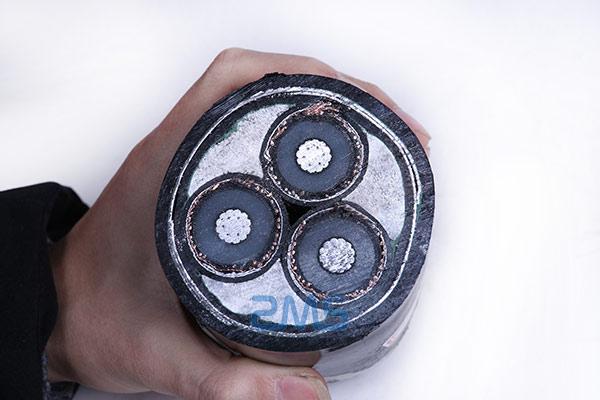Ⅰ. Cable lines in the mine underground due to space constraints and safety needs, in addition to the rack line motor car, are used cable lines
Power cables can be divided into rubber-insulated cables, plastic-insulated cables, and oil-impregnated paper-insulated cables according to the insulation material. At present, oil-impregnated paper-insulated cables are rarely used, so do not speak.

1. Mining rubber cable
Rubber insulated cable is also known as rubber-sheathed cable. Rubber-sheathed cable can be divided into ordinary rubber-sheathed cable and mining rubber-sheathed cable and other types due to different structures and materials. Mining rubber cable is also divided into shielded and non-shielded types.
1) Non-shielded mining rubber cable
The same as an ordinary rubber cable, except that the sheath is made of neoprene. Neoprene is also combustible, but it burns when the resulting hydrogen chloride gas does not fuel combustion and can surround the flame so that it is isolated from the air and quickly extinguished. Therefore, it is suitable for use inflammable and explosive places.
2)Shielded mining rubber cable
The main structure of shielded mining rubber cable and other rubber cable is basically the same. Only in its conductive core rubber insulation layer outside and wrapped a shielding layer. Shielding layer of semi-conductive rubber or copper wire nylon braided network of two. In the shielded cable, each shield layer is grounded. So when any of the main core insulation is damaged, first through the shield layer grounding caused by ground fault, so that leakage protection device action in advance to cut off power. This prevents a serious phase-to-phase short-circuit fault from occurring and causing a cable discharge. Also can prevent leakage sparks or short-circuit arc exposed to cause combustion and explosion of flammable and explosive materials. Therefore, shielded cables are particularly suitable for supplying power to places with explosive hazards and frequently moving electrical equipment.
Ⅱ. The calculation of the cable conductor cross-section
The selection of cable conductor cross-section is the key element of underground power supply design calculation. Choosing a suitable cable conductor cross-section can make the equipment voltage operate normally and efficiently, and the overcurrent protection action sensitivity check can easily meet the requirements. Usually, the steps for calculating the cross-section of underground cable lines are as follows.
(1) according to the long time allowable current initial selection of wire cross-section.
(2) to the production machinery power supply branch cable to verify the mechanical strength of the minimum allowable cross-section. Long cables should be checked for allowable voltage loss.
1. Select the cross-section of the conductor according to the long time allowable current
In order to make the wire in normal operation not exceed its long time, allowable temperature, the long time allowable current of the wire should not be less than the maximum long time working current flowing through the wire.
2. Verify the cross-section of the conductor according to the mechanical strength
The cable is laid in the working face and tunnel, inevitably subject to the role of external mechanical forces, the cross-section is too small cable is prone to breakage, sheath rupture, insulation damage phenomenon. Mining rubber cables should be in line with the standard to avoid breaking and rupturing under the action of external forces such as dragging and collision.
3. Calibration of wire cross-section according to the allowable voltage loss
(1) the calculation of line voltage loss
Transmission lines through the current will produce voltage loss. The so-called voltage loss is the arithmetic difference between the voltage at the beginning and end of the transmission line.
(2) Line allowable voltage loss
In order to ensure the voltage quality, the line voltage loss from the transformer outlet to the motor should not be greater than the allowable voltage loss of the line. The rated voltage of the secondary side of the underground transformer is 1.05UN, and the allowable minimum voltage of the motor is 0.95UN. Therefore, the sum of the voltage losses of the transformer and the line should not exceed 10% UN. Considering that the voltage loss of the transformer usually does not exceed 5%UN, the voltage loss of the line from the transformer outlet to the end of the line should not exceed 5%UN.
When there are multiple sections of cable from the transformer to the motor, the voltage loss of each section should be calculated first, and then the voltage loss of each section should be summed up to find out the total voltage loss for calibration.
